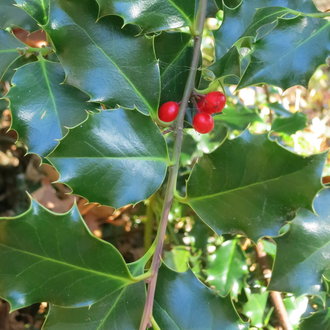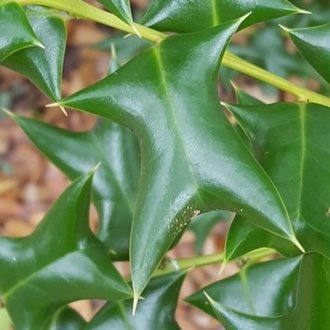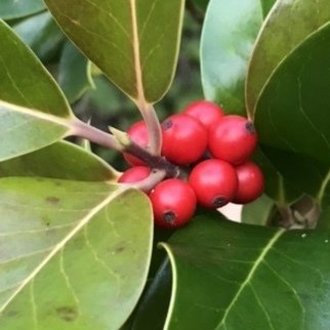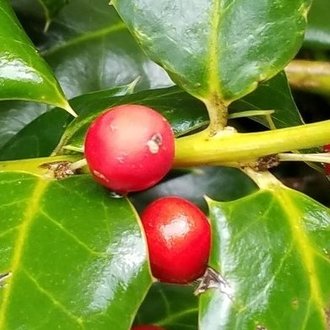European Holly vs Chinese Holly
This guide is under construction and has not been published yet. It may have errors. When in doubt, double-check other sources for definitive ID.These species are both used in landscaping and can be confused as both have glossy evergreen leaves with spines and bright red fruit. Wild plants are easily distinguished by differences in leaves, but cultivated plants can be harder to identify because of cultivars with reduced numbers of thorns. Although both species have established in the wild at multiple locations, there are no regions where both species are established in the wild.
European Holly (Ilex aquifolium) | Chinese Holly (Ilex cornuta) |
An evergreen tree native to Europe, widely established on the west coast of North America, where it can be invasive, and established on a few sites in the east as well. | An evergreen shrub native to East Asia, widely used in landscaping, and established in the wild in the southeastern U.S. where it can sometimes be invasive. |
Leaves lower down on a plant average far more spines per leaf. Spines shorter and softer, and leaves flatter, not curving down as much at edges. Photo © eralverson, CC BY 4.0. | Leaves usually with 5 or fewer spines each, occasionally as many as 7. Spines long and firm, leaves often exhibiting strong downward curvature between spines and also at tip. Photo © yajapin, CC BY 4.0. |
Longer petioles (stem connecting leaf to twig), often similar in length to the diameter of each fruit. Photo © Caleb Catto, CC BY 4.0. | Shorter petioles, often much shorter than the diameter of each fruit. Photo © Leila Dasher, CC BY 4.0. |
References & External Resources
These short lists show only links helpful for ID. For a complete list of references and resources also covering other aspects of ecology, visit the links section of the full article on each plant, which is the first entry here.






